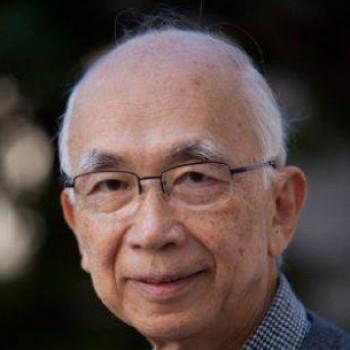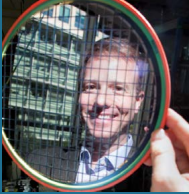 Stanford University
Stanford University
‘Leti Is the Best Choice’ for Visiting Researchers
Stanford University Prof. Yoshio Nishi came to Grenoble to head the Chair of Excellence Project funded by the Grenoble Nanosciences Foundation, and to work on the OxRAM project with Leti and IMEP-LaHC. The four-year project focused on developing a new memory technology: oxide-based resistive memories, in particular HfO2-based.
Among its achievements, the team studied the impact of alloying/doping HfO2 with other materials for improved RRAM performances. Using ab-initio calculations, they pointed out that incorporating aluminium in HfO2 results in better thermal stability of devices, due to shorter bond lengths associated with their higher atomic concentration. This has been confirmed by experiments.
Prof. Nishi, a professor of electrical engineering, spent several months in Leti’s memory lab, and co-tutored a PhD student and a post-doc. The team also published eight papers.
His relationship with Leti began about 30 years ago, when he was director of R&D at Toshiba and he met Leti scientists at conferences. “I have known Leti for a very long time,” he said. “The culture is very welcoming and there is a very strong work ethic. When I left the office at 7:30 p.m., oftentimes people were still working, which is very different than in the U.S. and Japan. But I also was impressed at how the French people spent their weekends focused on their families.”
He found that Leti’s openness and commitment to innovation provide an encouraging setting for serious researchers.
After lunch in the cafeteria, people gathered in a space for coffee, with a wonderful view of the snow-covered mountains,” Prof. Nishi recalled. “It was very nice to speak with Leti people in that setting and, in fact, some very interesting ideas came from those discussions. I tell my colleagues that if they have the chance to work in a foreign country, Leti in Grenoble is the best choice.” |  Massachusetts Institute
of Technology Massachusetts Institute
of Technology
“Not only were the people we worked with at
Leti very creative, they were also very warm
and welcoming.
These things fueled our
interaction,” said Professor Manalis.
The partnership between the
Massachusetts Institute of Technology
(MIT) and Leti began in late 2012, initially
involving Leti manufacturing devices that
were historically designed in labs at MIT.
According to Professor Manalis,
A colleague at Caltech had often told me
great things about Leti. I knew that Leti
had an excellent team that made very
complicated devices with high precision and
reproducibility.”
In 2016, the partnership evolved to focus
on a scientific research and development
project, involving suspended microchannel
resonators (SMRs). This technology
is based on a hollow cantilever beam
oscillating in vertical flexural mode, with a
buried microchannel inside, to allow fluid
to flow within it, while the resonator is
suspended in a vacuum cavity. Leti helped
to design the SMR components and then
manufactured them using state-of-the art
techniques.
Professor Manalis said, “What Leti did
involved three different types of bonding
steps—an anodic bond, a fusion bond, and
a eutectic bond. Each of those bonding
steps can be challenging to do well. Doing
two of them in a process is certainly a
lot harder than one. And Leti did three!
In addition to those three bonding steps,
there were many others that, taken one at
a time aren’t terribly hard, but when done
in combination with multiple bonding
steps, become increasingly complex. These
other steps include making piezo resistors,
drilling holes in glass, etching glass
channels, etching silicon channels, and
etching deep p into silicon to undercut the
underside.
The ability to make these sophisticated
devices is unique and is a distinguishing
quality of Leti. Importantly, the devices
were delivered on schedule and they
performed well.”
Setting up serial SMR arrays, and using
piezoresistive readout to monitor several
SMRs in real-time, the research and
development project made it possible to
measure and compare the growth rates
of individual cells in a very short period
of time. This technology will impact a
number of applications, including those
requiring the ability to assess the reactions
of individual cells to drugs.
“Everybody at Leti was very supportive of
our project and collaboration. They have an
extremely talented team and state-of-theart
resources,” said Professor Manalis.
|